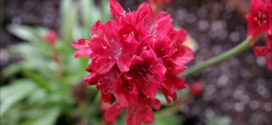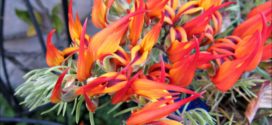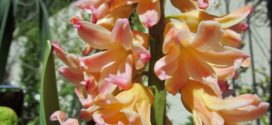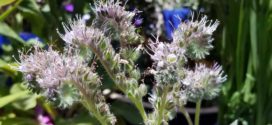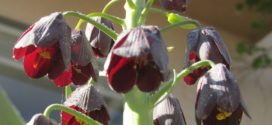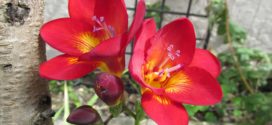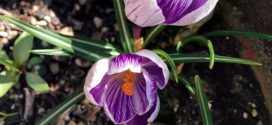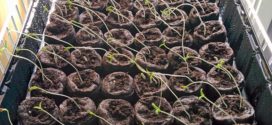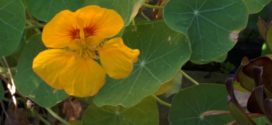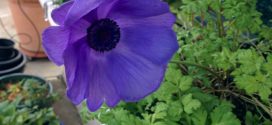Another first in 2017 for our Sunnyvale garden: Sea pink. Armeria maritima, commonly called thrift or sea pink, is a compact, low-growing plant which forms a dense, mounded tuft of stiff, linear, grass-like, dark green leaves (to 4″ tall). Tufts will spread slowly to 8-12″ wide. Tiny, pink to white flowers bloom in mid spring in globular clusters (3/4-1″ wide) …
Read More »admin
Lotus Berthelotti – ‘Red Embers’
The stunning, brightly colored unusually shaped blooms of the evergreen trailing plant Lotus berthelotii, commonly called parrot’s beak, brings a tropical feel to your garden or landscape. Native to the Canary and Cape Verde Islands off the west coast of Africa, Parrot’s beak is a sun-loving perennial that can be grown as an annual in areas below U.S. Department of …
Read More »Hyacinth – Dutch
We grow hyacinth in our Sunnyvale garden most years. Attractive to bees, butterflies and/or birds. Flowers are fragrant. This plant is suitable for growing indoors. The Dutch Hyacinth does best if planted new every year. Hyacinth blooms the first week in March, after the crocus have finished blooming, and right before the tulips start blooming. In 2019 we planted Deep …
Read More »Phacelia californica
Phacelia californica (California scorpionweed) is a central California native. This herbaceous perennial grows to 1-2 feet tall. Plant in rock gardens or on a slope with good drainage. The common name is because the flowers unfurling from the stalk look like a scorpion’s tail. Less imaginative explanation: it is similar to ferns. The flowers provide an important nectar source for …
Read More »Persian Fritillary
Spikes of deep maroon bells create an intriguing focal point in the spring garden. The tall stems are clothed with gray-green leaves, which are attractive in their own right. The Persian fritillary usually requires a season or two to establish itself. There are about 100 to 130 species of bulbous plants in the family Liliaceae, native to temperate regions of …
Read More »First Freesia of 2017
Freesia is a fragrant pretty spring corm that naturalizes so it comes back year after year. I plant them at the bases of the fruit trees and in containers to provide some of the first blooms and scents of spring.
Read More »This Sunnyvale Garden – February 2017
We had a very wet February in our Sunnyvale garden. But we still had a lot of flowers: Pea-shrub, orinthogalum, several types of crocus, daffodils, armeria, plum, apricot, flowering plum, viola, cyclamen, english daisy, yarrow, lavendar. On the vegetable side: cilantro, tomatoes, beet, garlic, rhubarb, chile, basil. Lots of spring growth: swartzkopf, mulberry, figs, milkweed, foxglove, caesurium, bleeding-heart, lily-of-the-valley, verbascum, …
Read More »Tomato Seedlings 2017
For the 2017 Sunnyvale garden, we are cutting back on our tomato varieties…only 9 this year. On January 16, I planted 2 seeds in each seedling pot, 6 pots per row, covered the tray, and turned on the seedling heating mat. Seven days later, almost of the cotyledon leaves have sprouted. For the past 15 years, Marie always orders the …
Read More »Nasturtium – Christmas 2016
Nasturtiums are great flowers for the Sunnyvale garden. They grow in most types of soil and soil moisture. The flowers are colorful and edible and have a peppery taste that can vary in intensity from flower to flower on the same plant. The strongest have a taste and aroma of horseradish. An added benefit is that the nasturtium fixes nitrogen. …
Read More »Anemone – Christmas 2016
Anemones, also known as windflowers, are a diverse group, with various species blooming in spring and fall. Some have fibrous roots and are found in the perennials section of nurseries and garden centers. Others grow from tubers that are sold and planted in the fall along with spring-flowering bulbs like tulips. I first planted these blue anemones in December 2015. …
Read More »